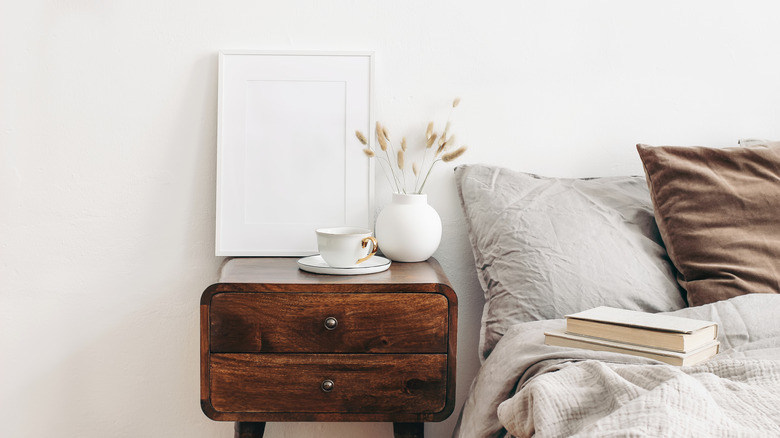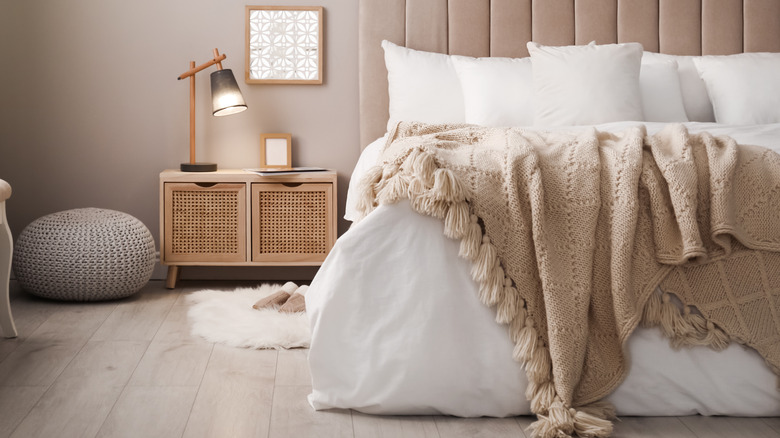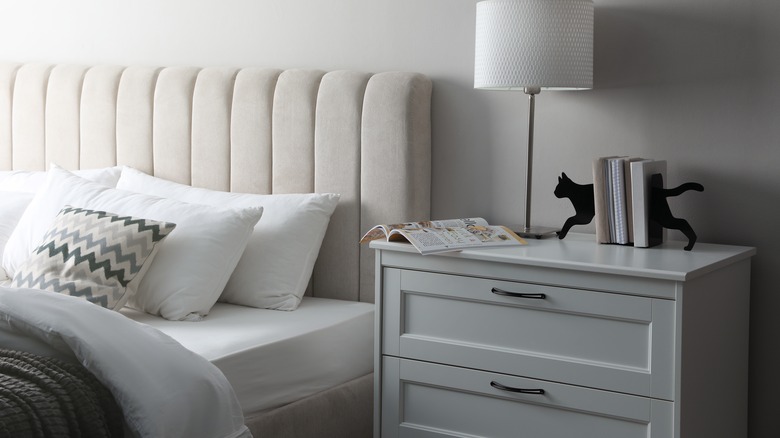How To Determine The Right Height For Your Nightstand
Choosing the right nightstand or bedside table can be a challenge, particularly if you are changing homes, renovating a room, or purchasing an entirely new bedroom set. The height of a nightstand is an important factor in balancing the room and space around the bed, as well as achieving optimal functionality for surface and storage needs.
While they are often a forgotten element, usually overshadowed by larger choices such as bedframes and dressers, nightstands can still go a long way toward creating the space you desire. While your focus may be on finding the perfect bedside table that fits the style of the room, do not forget to consider the overall dimensions of the piece and how it will relate to the things placed around, on, and inside of it. A poor choice can result in an off-kilter room and reduced functionality. A few helpful suggestions will keep your bedroom both fashionable and functional for years to come.
Finding the perfect nightstand height
The perfect height for your nightstand will depend on a number of factors, including the height of your bed from the floor, the thickness of the mattress, and the overall balance and proportion of the room. Ideally, you should look for a nightstand with a height that is slightly below the surface level of the bed and not too high that reaching for it is awkward or uncomfortable when lying down. Many bed heights come in around 25 inches, meaning a nightstand height between 24 and 28 inches would be ideal.
The width can vary, as different bed sizes, available space, and other room pieces are defining factors. For instance, a single bed will require a smaller nightstand compared to a king-sized frame. The ideal width of a top surface will not overwhelm or underwhelm your bed size but will furnish enough usable space to function as you need it to.
Other considerations
When choosing a nightstand, you should also consider the overall needs and scale of the room. If other pieces like dressers and armoires are large, you will need similar nightstands to achieve balance, such as a small chest of drawers. If the furniture in the room is smaller and lightweight, slender and simple pieces will work best. However, if the bedroom itself is small, bringing the eye and weight off the floor will help make the room appear more open, so opt for leggier pieces that aren't bottom-heavy.
Do not feel the pressure to purchase matching nightstands unless you want the strictness of symmetry. Often, mismatched pieces with a similar style are an attractive option. Also, consider how you use your nightstand. Is it simply a resting place for your phone and a lamp, or is a larger surface necessary for a cup of tea, décor, or stacks of reading material? What do you want visible, and what should be kept out of sight? Consider the possibility of dual-use pieces if space is at a premium, such as a desk or a vanity table.


